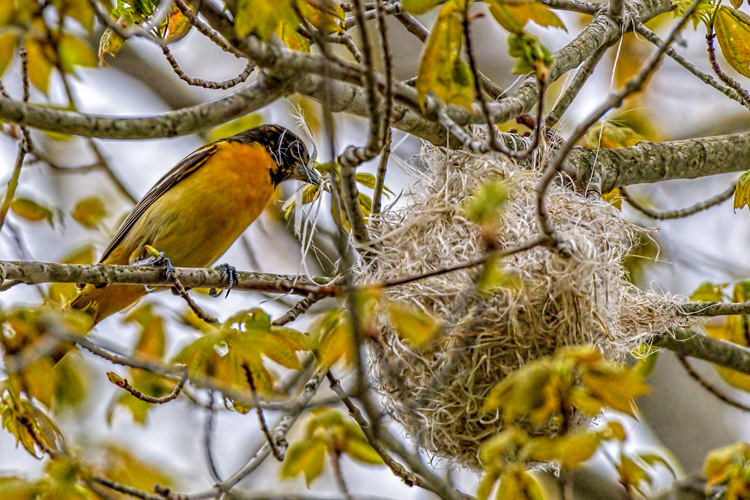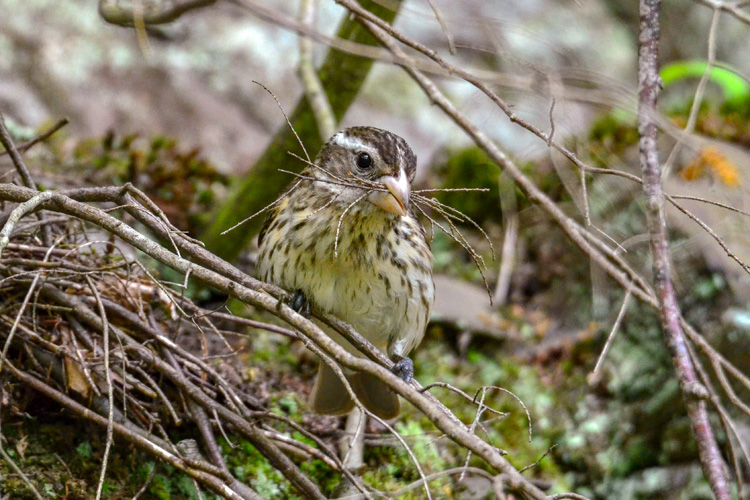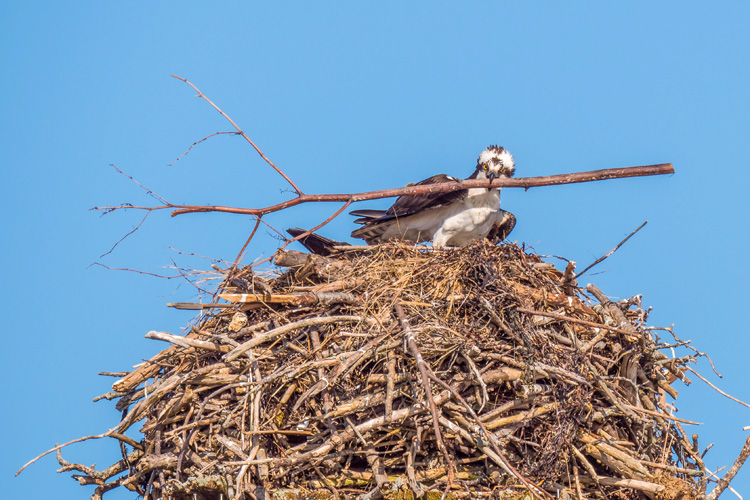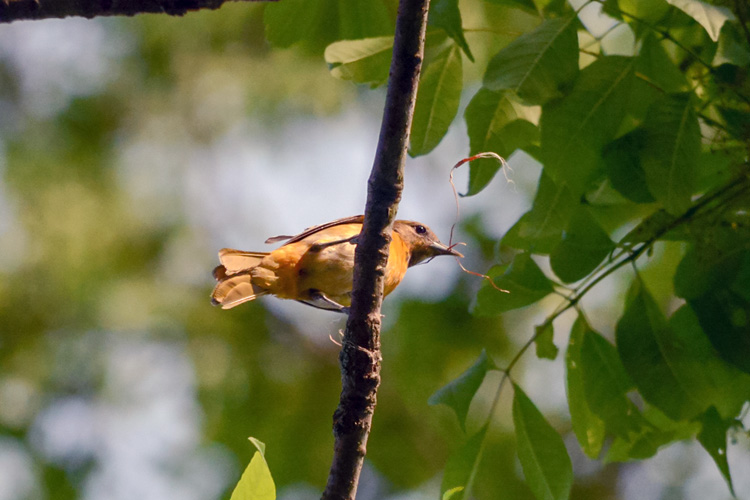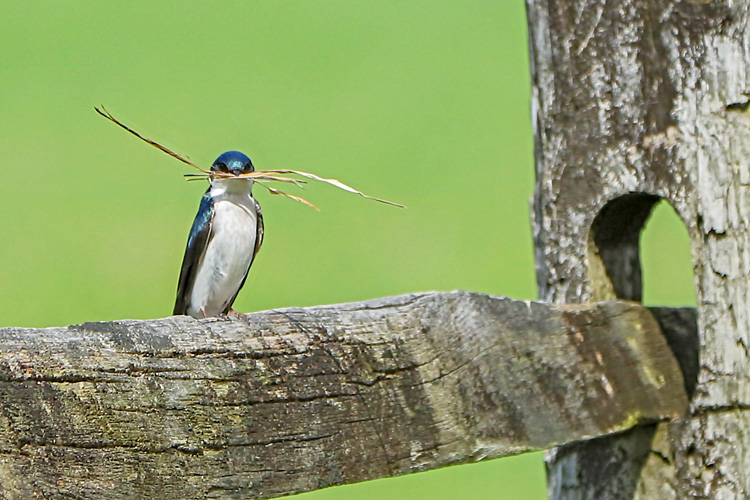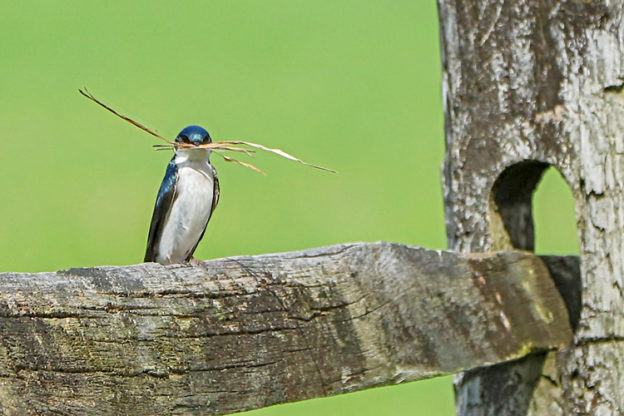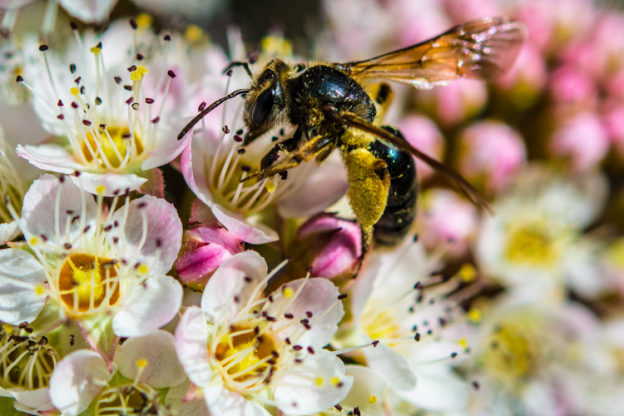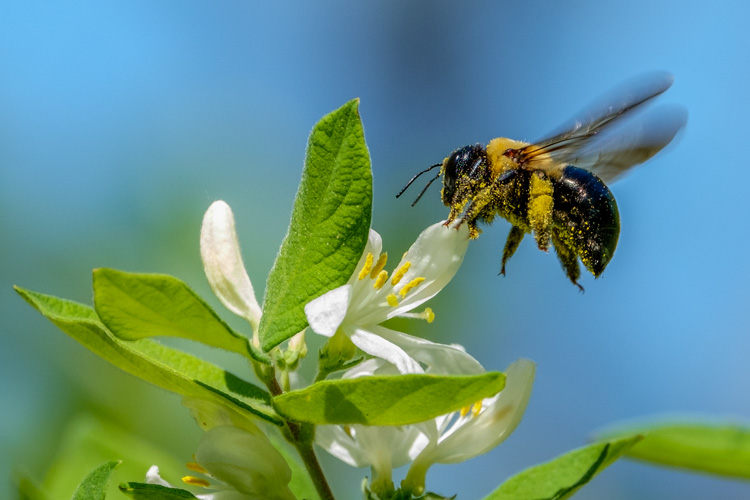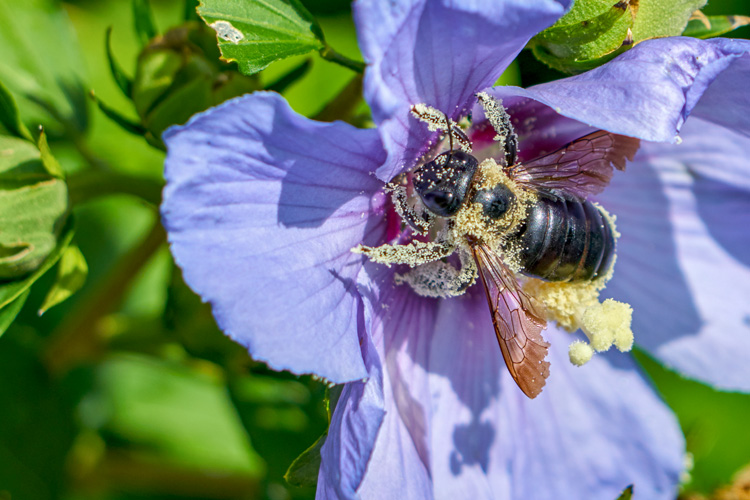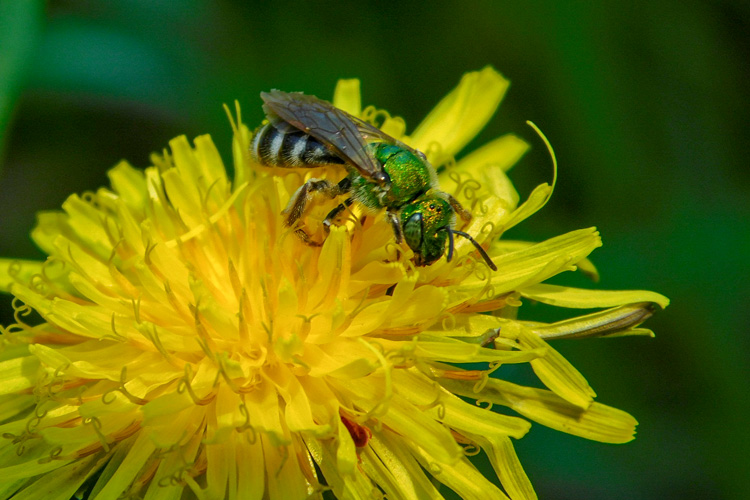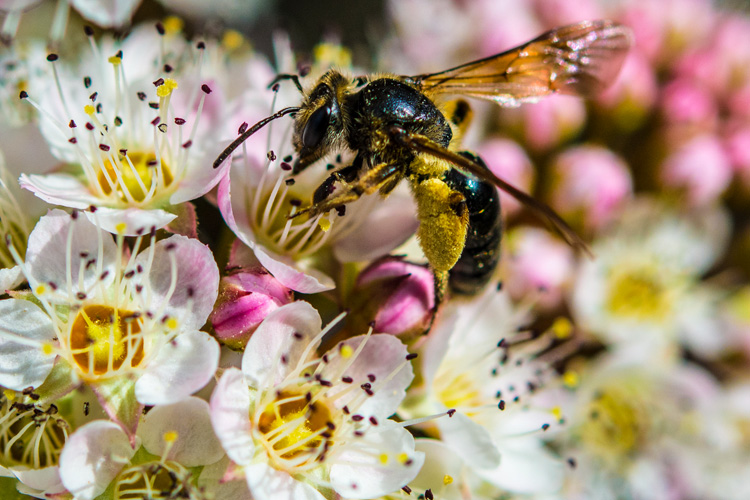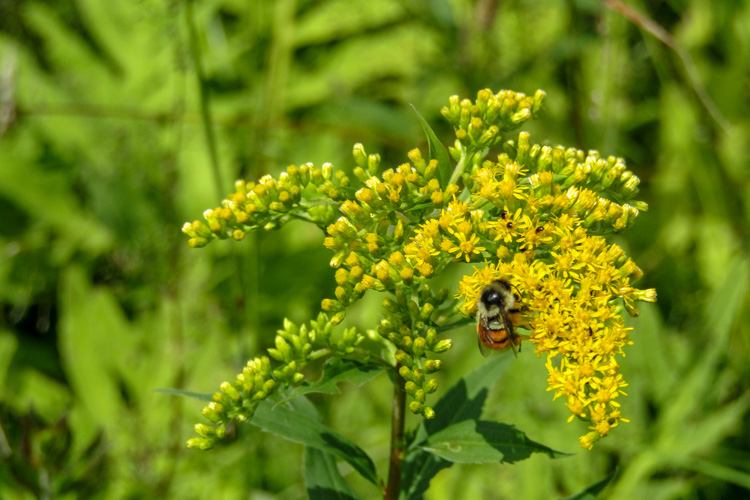The varied landscapes of Massachusetts provide nesting spots for nearly 200 bird species and spring is prime time for nest-building and brooding. You may have seen birds flitting back and forth with beaks full of twigs, grasses, and even plastic refuse to fortify their nests, which may pop up in any number of familiar or surprising places around your home and neighborhood.
A number of bird species nest on balconies and building ledges or in the nooks and crannies of houses. Observing these nests can be a source of enjoyment, and native species that eat insects, such as chimney swifts, barn swallows, and cliff swallows, help with pest control.
Sometimes, however, nesting behavior can bring birds into conflict with people, especially if birds construct a nest in an inconvenient or unsafe location in or around your house. Read our guide to Nests In & On Buildings and remember that relocating an active nest is really not an option—not only will bird parents abandon a relocated nest, it’s against federal and state law to disturb the nest of a native species.
To help you enjoy the bustling activity of nesting birds this spring, here are five photos of birds doing just that, all submitted to our annual Picture This: Your Great Outdoors photo contest.
